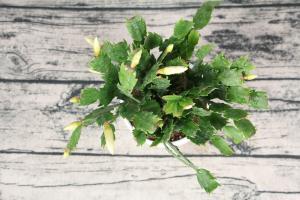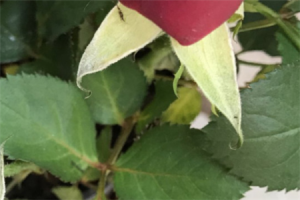What Does a Dragon Fruit Plant Look Like?
Dragon fruit, also known as pitaya, is a tropical fruit that is enjoyed for its juicy, sweet flesh and stunning appearance. But have you ever wondered what a dragon fruit plant looks like? In this article, we will explore the characteristics of a dragon fruit plant, from its appearance to its growing habit.
Appearance
At first glance, a dragon fruit plant may look like a cactus due to its spiny stems. The plant can grow up to 20 feet in length, with branching stems that can climb walls, trellises, or other structures. The stems are typically dark green in colour and have a ribbed, cylindrical shape. They are covered in small, sharp spines, which can be quite painful when touched.
As the dragon fruit plant mature, it can produce aerial roots, which can help the plant cling onto its surroundings. The fruit of a dragon fruit plant is also quite impressive to behold. It grows on the tips of the stems and resembles a scaly ball, with a shape that is similar to a pear or an oblong grapefruit. The fruit can range in size from 3-10 inches and can vary in colour from bright pink to yellow.
Habitat and Growing Conditions
The origins of the dragon fruit plant are still debated. Some speculate that it is native to Central and South America, while others believe it originated in Southeast Asia. However, the plant has found a home in many tropical regions around the world, including the Caribbean, Florida, and parts of Asia and Africa.
Dragon fruit plants thrive in warm, humid environments and are sensitive to frost. They prefer well-draining soil and should be watered regularly, especially during the growing season. Typically, the plant will begin to flower in late spring or early summer, and the fruit will ripen and be ready for harvest in late summer or early fall.
Benefits of Dragon Fruit Plants
Not only is dragon fruit tasty and visually appealing, but it also boasts a variety of health benefits. The fruit is low in calories, high in fibre, and packed with vitamins and minerals, such as vitamin C and iron. It is also a good source of antioxidants, which help to protect the body against oxidative stress and disease.
Aside from the fruit itself, the dragon fruit plant may also offer benefits. A study published in the journal Food and Chemical Toxicology found that the plant had anti-inflammatory and wound-healing properties when applied topically. Another study published in the journal Basic and Clinical Pharmacology and Toxicology found that the plant had anti-cancer effects in vitro.
In Conclusion
While the fruit of the dragon fruit plant may be the main attraction, the plant itself is an impressive sight to behold. With its spiny stems, aerial roots, and scaly fruit, it is truly a unique addition to any tropical garden. Moreover, the plant's many benefits make it a worthwhile investment for both its beauty and usefulness.

 how many times do yo...
how many times do yo... how many planted tre...
how many planted tre... how many pine trees ...
how many pine trees ... how many pecan trees...
how many pecan trees... how many plants comp...
how many plants comp... how many plants can ...
how many plants can ... how many plants and ...
how many plants and ... how many pepper plan...
how many pepper plan...































